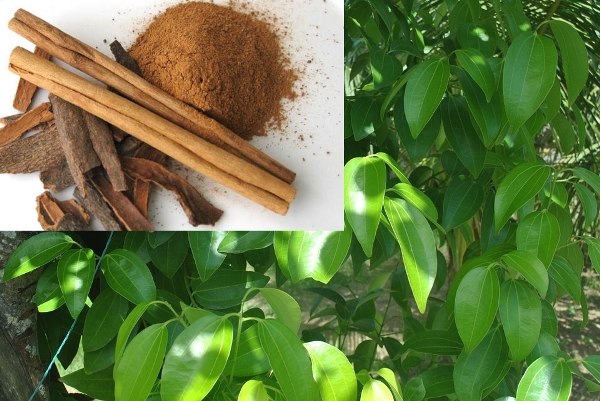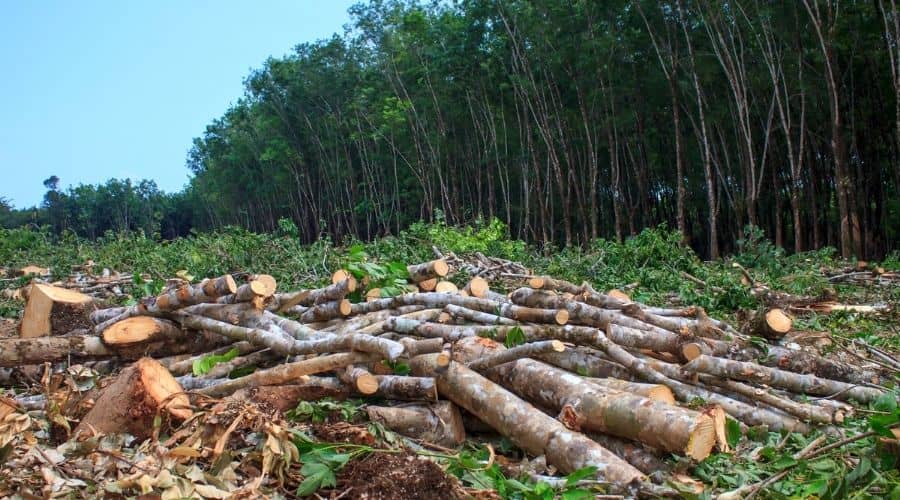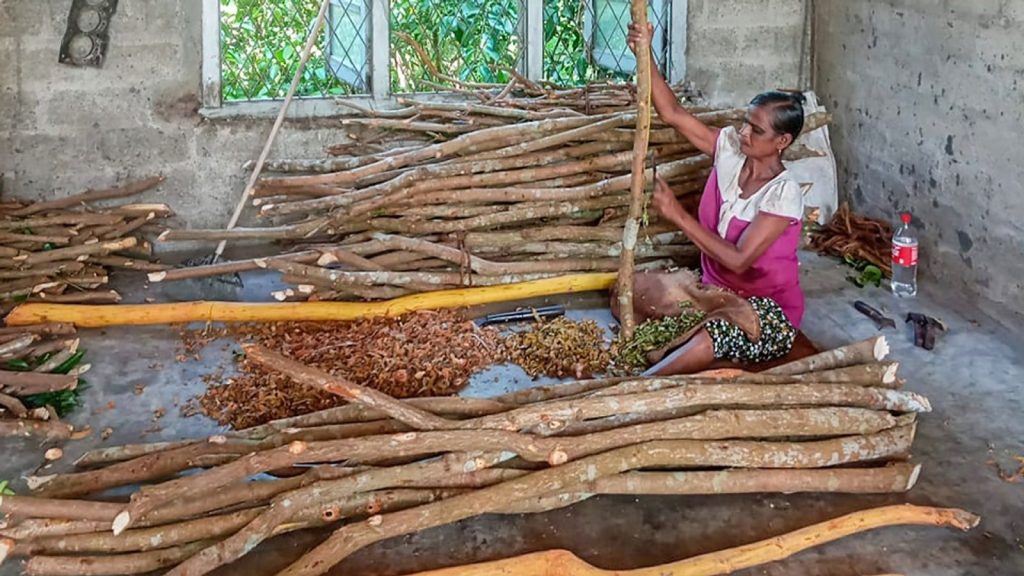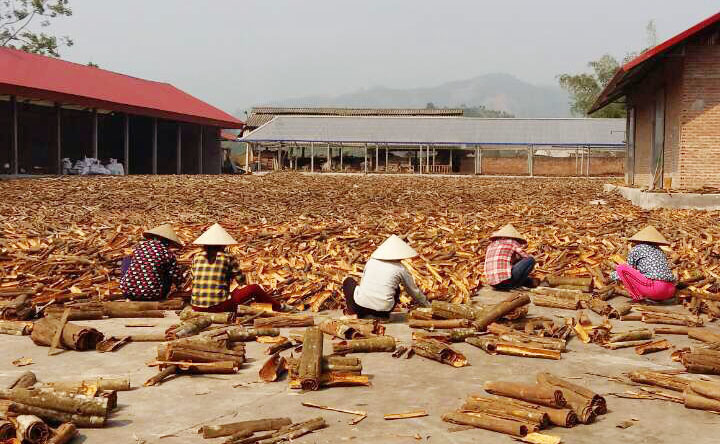Cinnamon, a fragrant and versatile spice, has been cherished for centuries for its flavor, aroma, and potential health benefits. As demand for this sought-after ingredient continues to rise, ensuring cinnamon sustainability and ethical sourcing becomes paramount.

This article delves into the complexities of cinnamon production, its environmental impact, social implications, and the steps being taken to cultivate a spice industry that respects both people and the planet.
Cinnamon: From Bark to Spice
Cinnamon is derived from the bark of trees belonging to the Cinnamomum genus, primarily Cinnamomum verum (Ceylon cinnamon) and Cinnamomum cassia (Cassia cinnamon). Harvesting and preparing cinnamon involves delicate and precise methods to extract its distinct flavor and aroma.
It adds depth to sweet treats, spiced beverages, and savory dishes. Beyond its culinary allure, cinnamon boasts potential health benefits, including antioxidant and anti-inflammatory properties. From tree to table, cinnamon remains an enchanting and treasured spice in cultures worldwide.

The Environmental Footprint of Cinnamon Production
A) Deforestation and Biodiversity Loss: Cinnamon cultivation often leads to deforestation, particularly in regions like Sri Lanka and Indonesia, threatening the habitats of numerous species. This section explores the ecological consequences of unchecked cinnamon farming.

Deforestation, driven by human activities like logging, agriculture, and urbanization, has dire consequences for biodiversity. As trees are cleared, vital habitats for countless species are destroyed, leading to a loss of plant and animal diversity. Ecosystems unravel, disrupting natural cycles and weakening the Earth’s resilience.
Biodiversity loss destabilizes ecosystems, affecting pollination, water purification, and climate regulation. Furthermore, as species disappear, potential sources of medicine and food diminish.
Urgent action is needed to combat deforestation through sustainable practices, reforestation, and protected areas. Preserving biodiversity is not just an environmental concern; it’s essential for our planet’s health and well-being.
B) Carbon Emissions and Climate Impact: The carbon footprint associated with cinnamon production, processing, and transportation contributes to climate change. A discussion on carbon emissions and potential mitigation strategies will be presented.
Cinnamon production primarily contributes to a carbon footprint through land use changes, energy consumption, and transportation. Deforestation for cinnamon cultivation releases stored carbon and disrupts natural carbon sinks. Agricultural practices like tilling, fertilization, and processing also emit greenhouse gases.
Energy-intensive processes in drying, milling, and packaging add to emissions. Transporting cinnamon from source countries to global markets further amplifies its carbon footprint. Sustainable farming practices, reforestation efforts, and efficient processing can mitigate this impact. Additionally, supporting local markets and reducing excessive transportation could minimize the carbon emissions linked to cinnamon production, promoting a more environmentally friendly industry.
Social Implications of Cinnamon Farming
Cinnamon farming carries social implications for producing communities. It often provides livelihoods for rural populations, contributing to local economies. However, low wages, poor working conditions, and lack of land ownership can impact laborers. The seasonal nature of cinnamon harvesting may lead to income instability.
Gender disparities might also arise in the labor division. Moreover, intensive farming practices can strain water resources and disrupt traditional land use. Sustainable farming models, fair trade practices, and community engagement are essential to address these social concerns, ensuring that cinnamon farming benefits local people while preserving their well-being and cultural heritage.

A) Working Conditions of Cinnamon Farming Farmers
Working conditions for cinnamon farming farmers can vary widely depending on factors such as geographic location, local regulations, and farming practices. In some regions, farmers may face challenging conditions due to:
- Harsh Physical Labor: Cinnamon harvesting often involves manual labor, including peeling bark, drying, and processing. This can be physically demanding and lead to fatigue and strain.
- Seasonal Nature: Cinnamon harvesting is often seasonal, resulting in irregular income and employment patterns for farmers and laborers.
- Low Wages: Farmers and laborers may receive low wages, especially in regions where labor rights and minimum wage laws are not enforced.
- Unsafe Working Conditions: Inadequate safety measures and equipment can expose workers to risks, such as accidents and injuries during harvesting and processing.
- Lack of Benefits: Limited access to healthcare, education, and social benefits can further impact the well-being of cinnamon farmers and their families.
- Gender Disparities: Women may face unequal treatment and limited opportunities in cinnamon farming, including lower wages and limited decision-making power.
- Land Ownership: Land tenure and ownership issues can affect farmers’ stability and long-term prospects.
B) Community Livelihoods of Cinnamon Farming Labors
The community livelihoods of cinnamon farming laborers are deeply intertwined with this industry. Many laborers depend on cinnamon cultivation for income and employment. They engage in physically demanding tasks such as bark peeling, drying, and processing. The seasonal nature of work can lead to income fluctuations, affecting their economic stability.
Efforts to improve their livelihoods may include ensuring fair wages, safe working conditions, access to healthcare, and opportunities for skill development. Empowering cinnamon farming laborers with better working conditions and social support can enhance community well-being and economic sustainability.

Cinnamon Sustainability and Ethical Sourcing Challenges
Cinnamon sustainability faces challenges like deforestation, soil depletion, and labor rights. Unregulated harvesting contributes to habitat loss and disrupts ecosystems. Intensive farming can degrade soil quality and water resources. Ethical sourcing is hindered by poor labor conditions and low wages for workers in some regions.
Addressing these issues requires promoting sustainable cultivation methods, reforestation efforts, and fair trade practices. Empowering local communities, ensuring proper wages, and implementing transparent supply chains are vital for ethical sourcing. Sustainable cinnamon production entails balancing economic gains with ecological preservation and ethical considerations.
A) Market Demand vs. Sustainability
The cinnamon market’s demand presents a challenge to sustainability. High global demand for cinnamon can lead to overexploitation and deforestation. Unsustainable farming practices, including excessive chemical use, can harm ecosystems and soil quality. Balancing this demand with sustainability requires promoting responsible cultivation, reforestation, and soil conservation.
Emphasizing organic and eco-friendly methods can reduce environmental impact. Consumer awareness and support for ethically sourced cinnamon can drive market shifts toward sustainability. Ultimately, ensuring the long-term viability of the cinnamon market requires aligning demand with ecological preservation and ethical considerations to create a harmonious balance between economic prosperity and environmental health.

Collaborative Efforts
Collaborative efforts have been instrumental in advancing cinnamon sustainability and ethical sourcing. NGOs, governments, and industry stakeholders have united to promote responsible cultivation practices, reforestation initiatives, and fair trade principles. Research partnerships have developed eco-friendly farming techniques, reducing environmental impact.
Certification programs ensure transparent supply chains, guaranteeing ethically sourced cinnamon reaches markets. Consumer awareness campaigns and educational programs empower buyers to make informed choices. These collective endeavors foster a positive shift towards sustainable cinnamon production, protecting ecosystems, supporting local communities, and promoting a more ethical and environmentally conscious cinnamon market.
Consumer Awareness and Empowerment
Cinnamon consumer awareness and empowerment are crucial in promoting sustainable and ethical sourcing practices. Educating consumers about cinnamon production’s environmental and social impacts encourages informed choices. Labels like organic or fair trade certifications empower consumers to support responsible brands. Sharing information about deforestation, biodiversity, and labor rights raises awareness and influences purchasing decisions.
Engaged consumers can drive the demand for sustainably sourced cinnamon, motivating producers to adopt eco-friendly methods and ethical labor practices. Ultimately, consumer awareness empowers individuals to contribute to positive change, fostering a more sustainable and ethical cinnamon industry.
A) Making Ethical Choices
Making ethical choices regarding cinnamon involves considering its environmental and social implications. Opting for sustainably sourced cinnamon supports efforts to prevent deforestation, protect biodiversity, and promote responsible farming practices. Choosing products with fair trade certifications ensures equitable wages and better working conditions for laborers.
Being mindful of the origin and production methods when purchasing cinnamon empowers consumers to contribute to a more ethical industry. Individuals can drive positive change by prioritizing sustainability and ethical considerations, encouraging producers to prioritize environmental conservation, social responsibility, and community well-being in cinnamon production.

B) Supporting Change
Support sustainable cinnamon production by choosing products with certified organic or fair trade labels. These ensure environmentally friendly and ethically sourced cinnamon. Advocate for sustainable practices by sharing information on social media and contacting brands to inquire about their sourcing methods.
Participate in local initiatives, workshops, or online forums promoting sustainable agriculture. Consumers can drive positive change in cinnamon production toward a more sustainable and ethical future by making informed choices, spreading awareness, and actively participating.
Conclusion :
Cultivating cinnamon with conscience necessitates a harmonious blend of sustainability and ethical sourcing practices. As consumers, supporting certified organic or fair trade options empowers positive change. Industry players must prioritize regenerative farming, equitable wages, and transparent supply chains. Embracing innovation can minimize environmental impact while maximizing yield.
By fostering partnerships between stakeholders, we can ensure a fragrant industry that not only delights our senses but also preserves ecosystems and uplifts cinnamon-growing communities. Let’s collectively nurture a future where the allure of cinnamon is enriched by the knowledge that its cultivation embodies both environmental stewardship and social responsibility.
